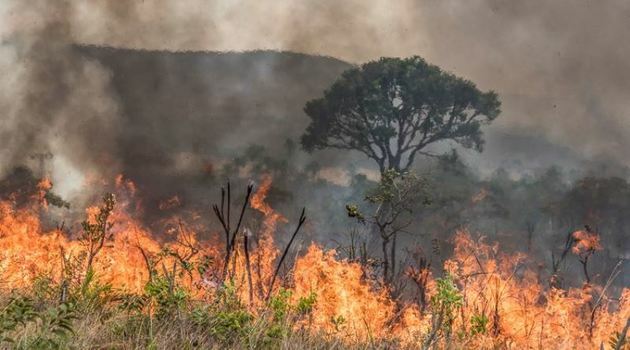Fires are a type of agricultural practice used in rural areas, being one of the oldest actions carried out by man.
Considered of low cost, burning is known for its speed, as in many cases it is used as a tool for cleaning and fertilizing the soil.
On the other hand, in some cases its application can lose control, causing large fires, in addition to being criticized by environmentalists.
Causes and types of fire
Different factors can cause burning, as it can be applied in order to achieve different objectives, or it can be criminal.
See below the main causes and types of fires.
| Cause | Type | Description |
|---|---|---|
| Manual harvesting of sugar cane | agricultural practice | Used for the purpose of clearing the land and facilitating the cutting of sugarcane. This practice is still very common in sugarcane fields. |
| Wood removal | agricultural practice | Used as a tool for removing wood, in which smaller plants are burned so that the cutting of larger trees is easier. |
| Germination and nutrient recycling | agricultural practice | Used as a process for germination of certain species of vegetables. In some ecosystems where there is a predominance of grasses, burning acts as a factor that stimulates the recycling of nutrients. |
| Vandalism | Criminal | It is when fires are intentionally provoked, such as when discarding lit cigarettes on roadsides and in abandoned land. |
| June party balloon | Negligence | That's when the June party balloon and fireworks are used as a form of celebration, but they cause fires that generate fires in urban areas. |
| Ownership dispute | Criminal | It is when landowners intentionally cause burning, motivated by disputes over agricultural land. |
| Lack of rain | climatic | It is when the burning is caused by the lack of moisture in the air and in the soil, which normally occurs in regions with little rain. |
It is important to highlight that burning as an agricultural practice is carried out in a controlled and assisted manner. Intentional fires are not, as they easily lose control and result in fires.
Consequences of fire
Fires have consequences for the environment, among them the main ones are:
- changes in the balance of ecosystems;
- desertification environmental;
- circulation of surface and underground waters;
- change in soil temperature and moisture;
- maintenance and control of fauna and flora;
- decrease in biodiversity;
- emission of polluting gases;
- worsens air quality;
- contributes to the increase of air pollution;
- intensifies the greenhouse effect and global warming.
Burns in Brazil

In Brazil, burning is very common, but it is not always caused in a controlled manner. Intentional fires or fires caused by lack of rain generate serious consequences.
It is estimated that each year Brazil loses about 15 thousand km2 of forests because of fires that lost control, turning into large fires.
The Northeast region is the one with the highest rate of occurrence of fires, especially between the months of October and January. In the Midwest region, the months from July to October are the most critical.
Thus, it is possible to state that the biome thick it is the one that suffers the most from fires and fires, causing the death of several animals.
Also know about:
- Fires in the Pantanal
- Animals of the Cerrado
- Brazilian Biomes
- Fauna and Flora
- Brazilian fauna
- Flora of Brazil
Control of fires in Brazil

To help control burning, there are different projects and programs linked to the Federal Government that carry out monitoring and awareness-raising actions on burning.
- Queimadas Portal: this is a campaign by the Federal Government that aims to raise awareness of the danger caused by fires, especially their consequences in forests and forests. This program also guides citizens to report fires and fires that belong to the national territory.
- Burns Program: belonging to the National Institute for Special Research (INPE), this program works by developing research and publishing the results obtained from the burning monitoring system. In addition to disclosing information about fires and fires.
- Chico Mendes Institute for Biodiversity Conservation (ICMBio): belonging to the Ministry of the Environment, ICMBio conducts annual campaigns against fires, promoting actions to fight fires and fire handling.

